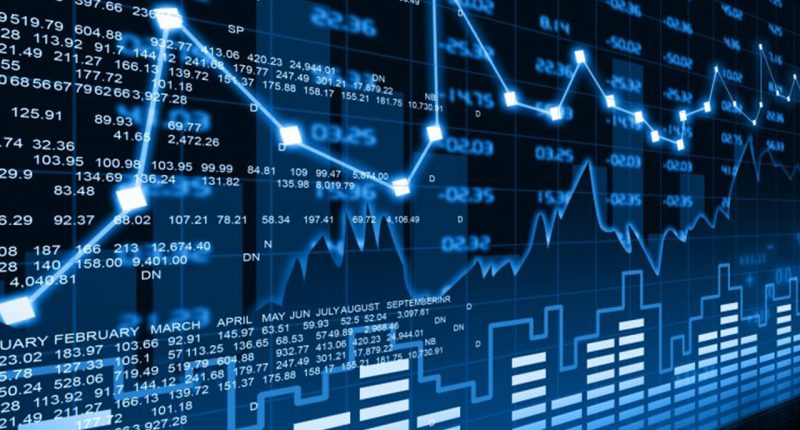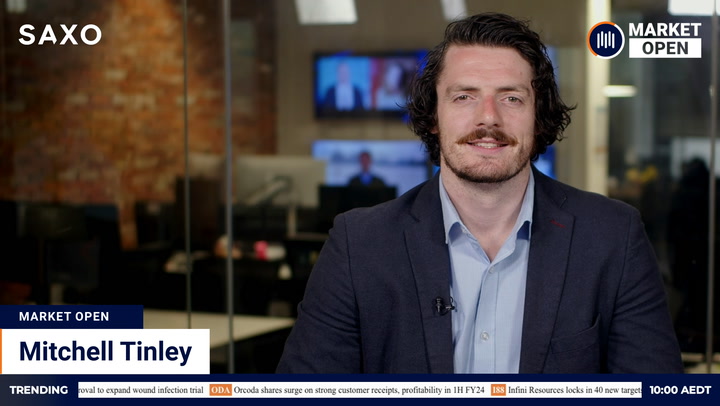Aussie shares were set to start the week sharply lower after the threat of a rate rise next year helped drag Wall Street to its worst weekly loss since October.
ASX futures slumped 111 points or 1.52 per cent, signalling a grim open after five straight weekly advances and a string of record closes.
US stocks fell heavily on Friday after a Federal Reserve official said the central bank might not wait until 2023 to raise rates.
Gold and copper suffered their heaviest weekly declines since the start of the pandemic. Iron ore and other base metals also retreated. Oil rebounded. The dollar fell below 75 US cents for the first time since December.
Wall Street
A market that was still adjusting to mid-week news US rates would likely rise in 2023, a year ahead of consensus, shuddered again when the President of the St Louis Federal Reserve indicated the first rise may come even sooner.
“I put us starting in late 2022,” James Bullard told CNBC.
The Dow Jones Industrial Average skidded 533 points or 1.58 per cent. The S&P 500 shed 55 points or 1.31 per cent. The Nasdaq Composite gave up 131 points or 0.92 per cent.
The declines sealed the major indices’ worst weekly returns in months. The Dow lost 3.45 per cent, its heaviest decline since October. The S&P 500 shed 1.94 per cent, its worst since February. The Nasdaq, which outperformed all week in a falling market, gave up a modest 0.32 per cent.
Market complacency suffered a body blow on Wednesday when the Fed’s “dot plot” projections showed a majority of committee members expect to raise rates twice in 2023. The unexpectedly hawkish outlook triggered sharp dislocations on equity, bond and commodity markets.
“This week’s first whiff of an eventual change in Fed policy was a reminder that emergency monetary conditions and the free-money era will ultimately end,” strategists at MRB Partners wrote. “We expect a series of incremental retreats from the Fed’s benign inflation outlook in the coming months.”
The retreat was led by cyclical sectors whose earnings appear most vulnerable to a slowdown in economic growth as rates tighten. The financial and materials sectors both fell more than 6 per cent. Energy stocks dropped 5.2 per cent and industrials 3.8 per cent.
“Investors are already grappling with the notion that the economy has been propped up markedly, thanks to monetary and fiscal support, but now market participants must accept the fact that the time has come to begin to remove – or at least talk about removing – the punch bowl, returning the economy to more organic means,” analysts at investment bank Stifel wrote.
Volatility returned to the market. The Chicago Board Options Exchange Volatility Index – the VIX – rose to its highest in four weeks. Trading volumes jumped on Friday as four different types of derivatives expired during a “quadruple witching” session.
The US dollar has been the big winner from the changing outlook. The US dollar index, which measures the greenback against a basket of six currencies, climbed to its highest since mid-April. Increased costs for holders of other currencies weighed heavily on base and precious metals.
Australian outlook
A tough session coming up as the ASX scrambles back into some sort of alignment with Wall Street. The local market largely ignored last week’s turmoil in the US, but Friday’s slump looks like a tipping point.
The performance gap between the two markets has become too wide to ignore. While the Dow lost almost 3.5 per cent last week and the S&P 500 more than 1.9 per cent, the S&P/ASX 200 gained 0.8 per cent.
This week will offer a test of investors’ willingness to “buy the dip”, but many will want to see how Wall Street starts the week before committing.
Exporters and importers will come under the microscope. The dollar tumbled below 75 US cents on Friday for the first time since December. The Aussie fell 1 per cent to 74.78 US cents. The local unit started the week 0.04 per cent higher at 74.82 US cents.
The local dollar has given up almost two cents against the greenback in three sessions since the Fed indicated US rates will rise in 2023, up to a year ahead of the RBA’s expectation for the Australian cash rate. While a weaker dollar is generally seen as a plus for the Australian economy, the pace of the fall will have some fund managers struggling to reposition.
Tax-loss selling ahead of June 30 is likely to become a greater factor over the next week and a half. Investors who have enjoyed spectacular portfolio gains this financial year have an incentive to cut losers to reduce their tax bills. That means fresh down-pressure on some of the market’s worst performers.
This week brings one of the biggest IPOs of the year: Endeavour Group, due to list on Thursday. The drinks business is being spun out of Woolworths. Woolies shareholders receive one Endeavour share for every WOW share they hold. The group owns Dan Murphy’s, BWS, Cellarmasters and 332 hotels and 1,775 liquor licensed venues with 12,364 pokie machines.
The rest of the IPO pipeline currently looks like this (bear in mind listings are prone to last-minute changes): Codrus Minerals, Tamboran Resources (Wednesday); Arcadia Minerals (Thursday); and Australian Rare Earths, Torque Metals, WAM Strategic Value Ltd and Openn Negotiation (Friday).
The final May retail report due for release today is expected to confirm sales increased 0.4 per cent as a post-lockdown spending boom started to slow. Weekly consumer sentiment and wages data are due tomorrow. Wednesday brings preliminary June manufacturing and services PMIs.
With the outlook for rates and inflation dominating equity trade, a speech by Reserve Bank Assistant Governor Luci Ellis on Wednesday will attract more interest than usual.
Overseas, all eyes will be on Federal Reserve Chair Jerome Powell when he testifies before a House committee on Tuesday night Australian time. Other highlights on the US calendar include manufacturing and services PMIs on Wednesday night, final GDP figures, durable goods and weekly jobless claims on Thursday and consumer sentiment on Friday.
Commodities
Gold wrapped up its worst week since March 2020 with another retreat as the surging greenback cruelled interest in alternative stores of wealth. Metal for August delivery settled $5.80 or 0.3 per cent lower at US$1,769 an ounce.
The yellow metal gave up around 5.9 per cent last week, according to FactSet data. Silver lost 7.7 per cent. The NYSE Arca Gold Bugs Index dropped another 2.9 per cent on Friday.
“The lingering benefits of gold as an inflation hedge are diminished if the Fed isn’t going to let inflation rip,” Marshall Gittler, head of investment research at BDSwiss Group, wrote.
Copper – the “metal with the degree in economics” – fell more than 8 per cent in US trade last week. July copper dropped 0.5 per cent on Friday to US$4.16 a pound on Comex.
Benchmark copper on the London Metal Exchange declined 1.8 per cent to US$9,119.75 a tonne. Aluminium gave up 1.4 per cent, nickel 0.1 per cent, zinc 3.1 per cent and tin 2.3 per cent. Lead improved 1.5 per cent.
Iron ore largely weathered last week’s commodities storm, but eased on Friday. The spot price for ore landed in China dipped $3.50 or 1.6 per cent to US$217.30 a tonne.
Mining giants BHP and Rio Tinto were caught up in a wider market sell-off. BHP’s US-listed stock fell 2.78 per cent and its UK-listed stock 2.21 per cent. Rio Tinto shed 2.38 per cent in the US and 1.24 per cent in the UK.
Oil rebounded as victory for a hardline candidate in Iran’s presidential election dented the prospects for a nuclear deal and the return to market of Iranian crude. Brent crude settled 43 cents or 0.6 per cent ahead at US$73.51 a barrel.







